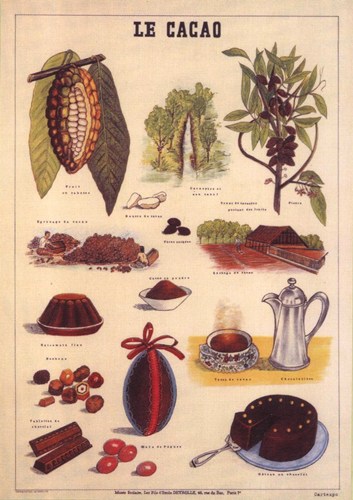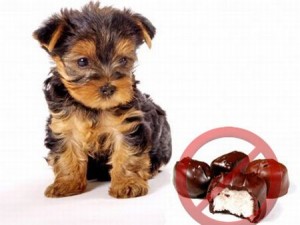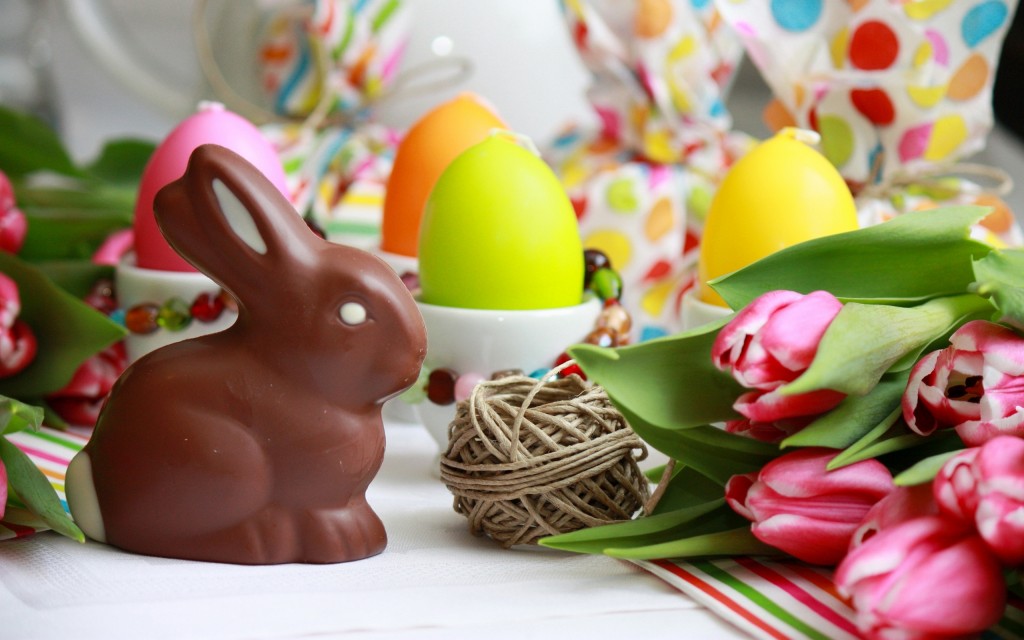CHELSEA CHANG | BLOGGER | SQ ONLINE 2014—15
Happy Easter! I hope that you had a delightful Easter celebration with colorful easter eggs, cute animals, and lots and lots of chocolate bunnies.
One of the signature practices of Easter is the gifting of chocolate, the sweet and bitter heaven-in-your-mouth confection. According to The Happy Chocolatier, chocolate has long been referred to as the “food of gods” by the Aztec people. By the 1800s, chocolate became popular in Europe as European explorers brought chocolate back from the New World (along with other treasures, like gold). Chocolate’s rich taste, creamy flavor, unique texture, and reputation as an aphrodisiac soon made Europe fall under its charm like nothing else.
It is not hard to imagine why chocolates became a must-have on the most adorable day of the year. Let’s figure out how its chemistry works all the delicious magic in our bodies.
What exactly is chocolate? According to UCLA’s Science and Food blog, chocolate is produced from cocoa beans, which are the seeds of the pods that grow from the cacao tree (Theobroma cacao). Cacao trees only grow within a region known as the Cocoa Belt, which is 10° to 20° north and south of the equator¹. 
Chocolate is actually a crystalline solid whose constituents are arranged in a highly ordered structure². The cocoa butter, a main ingredient of chocolate, contains several triglycerides, which are chemical compounds that lock into crystal form when the chocolate is cooled, making the chocolate a complicated molecular material³. Many food scientists think that understanding chocolate’s crystal structure is key to crafting quality.
Dr. Richard Ludescher, professor of food science at Rutgers University, thinks that the texture of chocolate is as important as (if not more important than) taste. The melt-in-your-mouth property that is almost exclusive to chocolate bars makes it unique and addicting. The only other crystalline solids that we eat are ice, sugar, salt, butter, and margarine, which can be solid at room temperature but completely melt in your mouth.
Some studies suggest that chocolate is a kind of stimulant (like caffeine). People who consume chocolate also report certain experiences associated with it. In fact, chocolate contains theobromine, a compound that is similar to caffeine in the way that it increases alertness and sharpness of mind. Theobromine also functions as a vasodilator, which slows down the heartbeat and causes blood vessels to relax and can produce effects like those of Viagra. Like caffeine, theobromine is a powerful diuretic (though it is not as powerful as caffeine).  Large doses therefore can similarly cause discomfort in the human body. Speaking of the human body, why is chocolate so toxic to dogs? Well, it is because dogs need much longer to metabolize theobromine. When dogs consume chocolate, theobromine can linger in a dog’s system for days (as opposed to several hours in a human system) and cause heavy vomiting and diarrhea, seizures, and possible organ failure.
Large doses therefore can similarly cause discomfort in the human body. Speaking of the human body, why is chocolate so toxic to dogs? Well, it is because dogs need much longer to metabolize theobromine. When dogs consume chocolate, theobromine can linger in a dog’s system for days (as opposed to several hours in a human system) and cause heavy vomiting and diarrhea, seizures, and possible organ failure.
There is also much speculation about whether chocolate actually makes you feel happy. It is often a go-to comfort food in all kinds of situations. Whether it is a wedding or a breakup, chocolate is always there to support you. But does chocolate release chemicals in our bodies in a tangible and positive way? According to BBC Focus Magazine, chocolate contains tryptophan, an amino acid used to make serotonin, the neurotransmitter that is responsible for happiness and good feelings. It also contains phenylethylamine, an organic compound that can act as an antidepressant when coupled with dopamine, another neurotransmitter essential to nerve cell communication. So yes, chocolate does make you feel good on a biochemical levelâ·.
I hope you enjoyed learning about chocolate and the ways it is useful and tasty in our lives. Happy Easter, everybody! If you think you are addicted to chocolate, you should watch “The Science of Chocolate” by SciShow and learn more about one of the most loved sweets of all time.
[hr gap=”0″]
References:
- https://scienceandfooducla.wordpress.com/2014/02/25/chocolate/
- https://www.youtube.com/watch?v=xRp2i3epxD0
- http://blogs.discovermagazine.com/cosmicvariance/2008/04/30/the-physics-of-chocolate/#.VRns1TvF-14
- https://www.youtube.com/watch?v=xRp2i3epxD0
- http://www.rsc.org/chemistryworld/podcast/CIIEcompounds/transcripts/theobromine.asp
- https://www.youtube.com/watch?v=bt7tzEzEg5o
- http://www.sciencefocus.com/blog/why-does-chocolate-make-us-happy
Images:
- .http://onemillionwallpapers.com/wp-content/uploads/2015/03/chocolate_easter_bunny__free_download_one_million_wallpapers_mobiles_screen.jpg
- http://img.discountpostersale.com/posters/ISIS10904/1/Le-Cacao.jpg
- http://www.factslides.com/imgs/chocolate-dog.jpg
